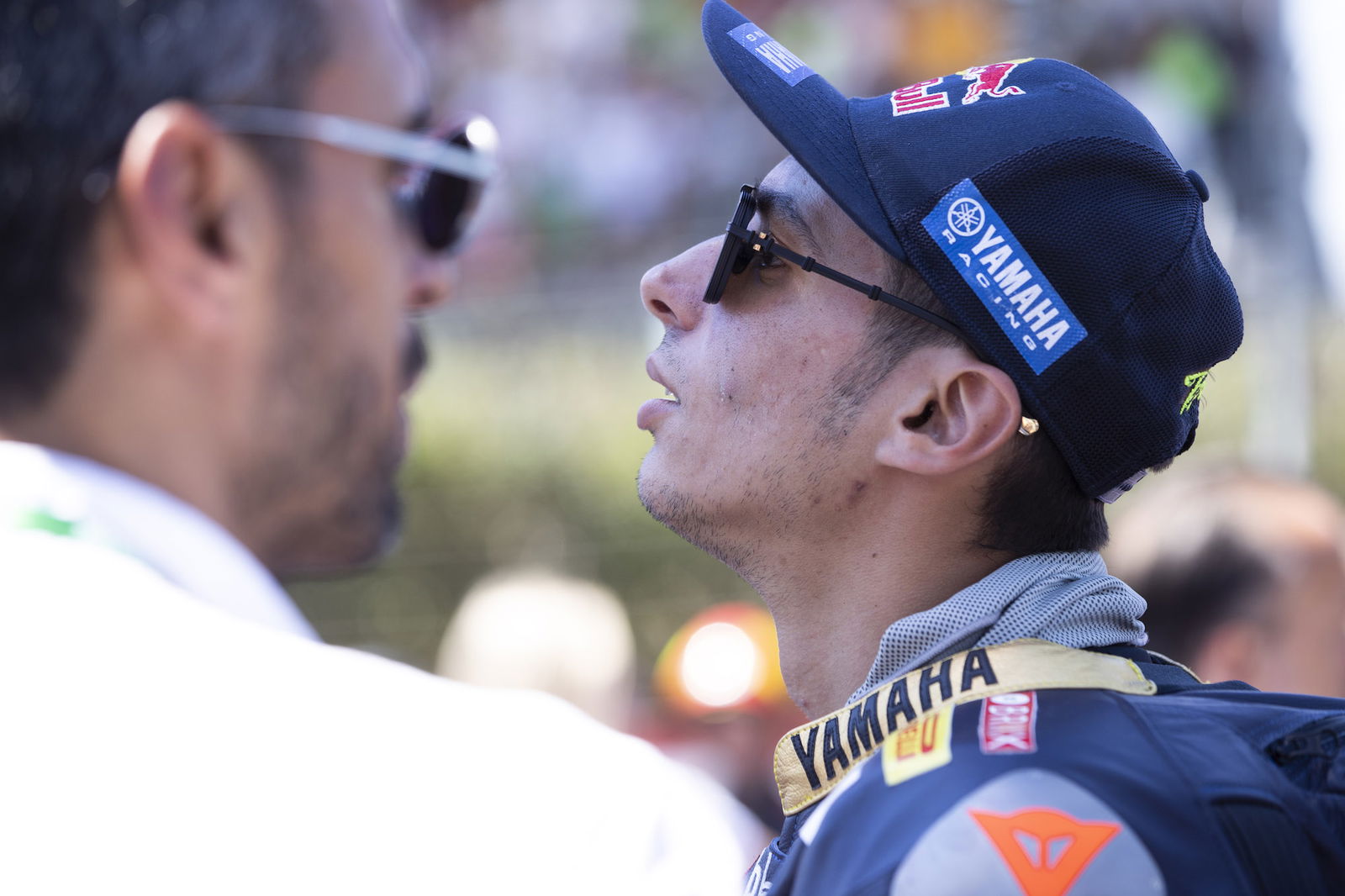Ducati unveil MotoE prototype, signal electric production intentions
Ducati's V21L MotoE unveiling shows its intentions for the spec electric racing series, but also about its electric future outside of the race track.
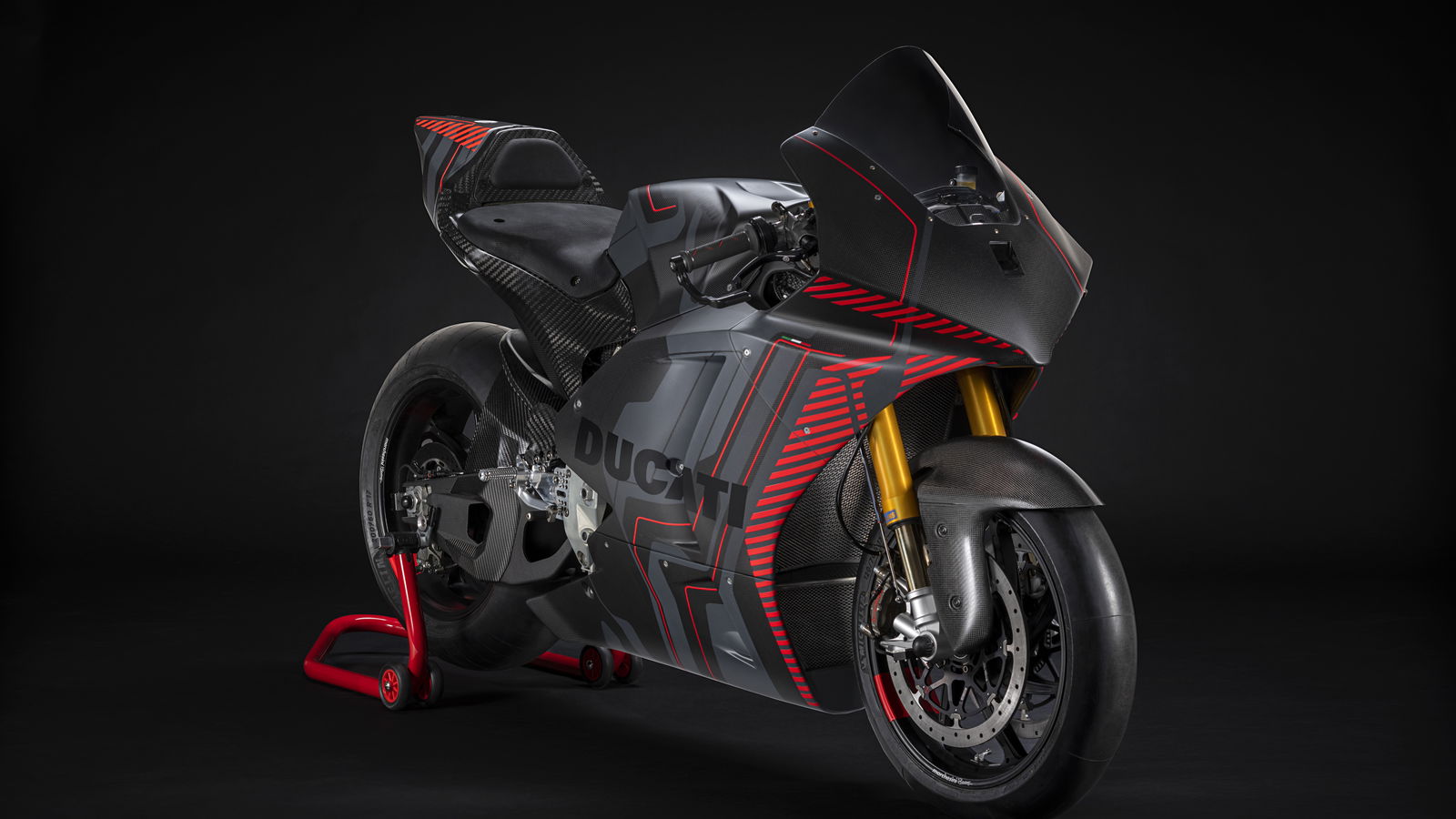
Ducati has officially unveiled its MotoE prototype that will become the official bike of the MotoE World Cup from 2023.
Ducati’s first electric racer will be called the V21L, and is a collaboration between Ducati’s research and development department, and the racing department: Ducati Corse.
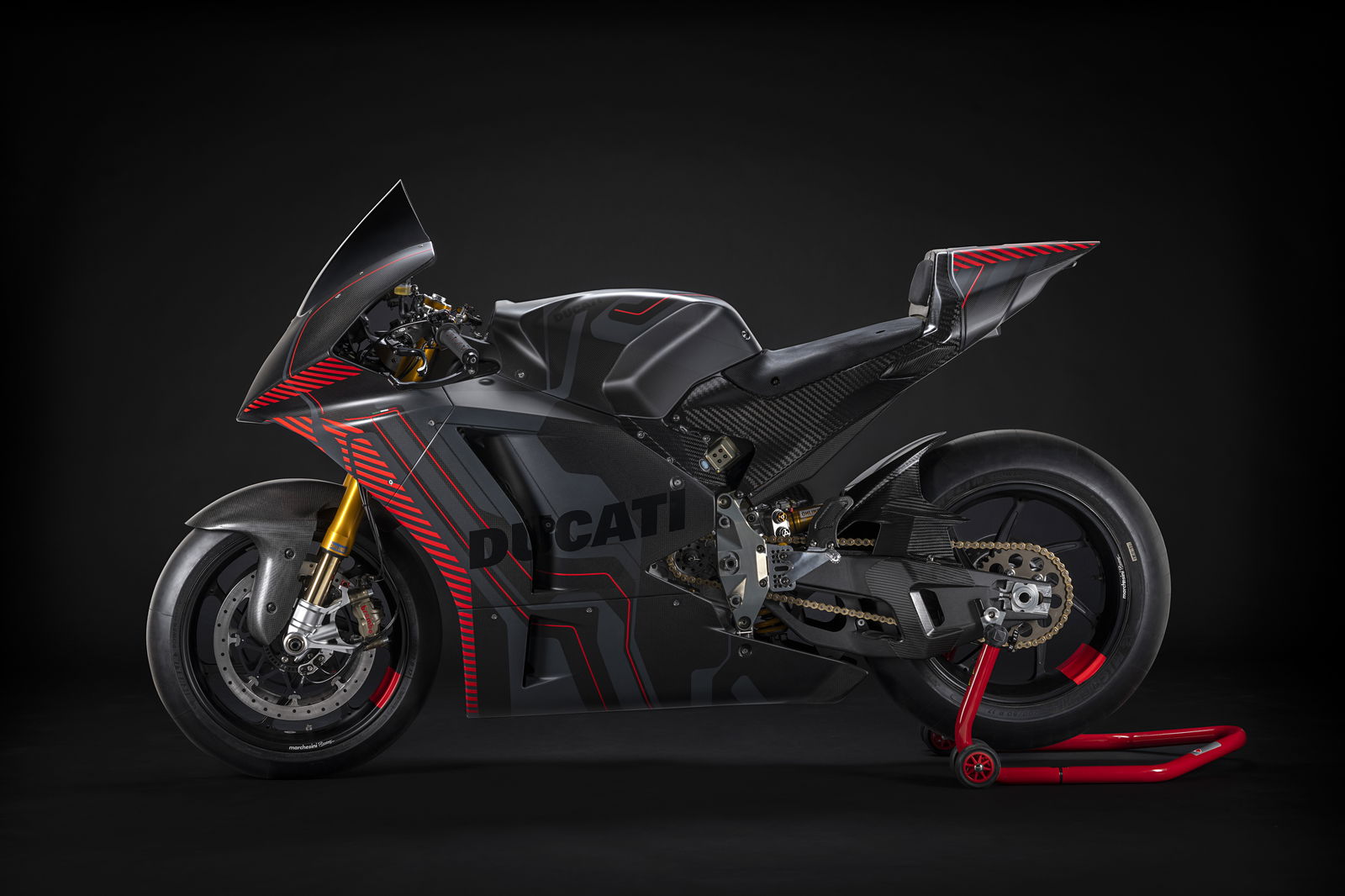
Starting away from the motor, the suspension comes from Ohlins and their NPX 25/30, 43mm, USD pressurised fork, and TTX36 rear shock. The forks are also used by Ducati on their Superleggera V4 bike, while the steering damper is also an Ohlins unit.
Panigale technology is also used in the chassis design, as the battery also operates as a stressed part of the frame, which is the case for the current V4, as well as the 1299 and 1199 Panigales before it.
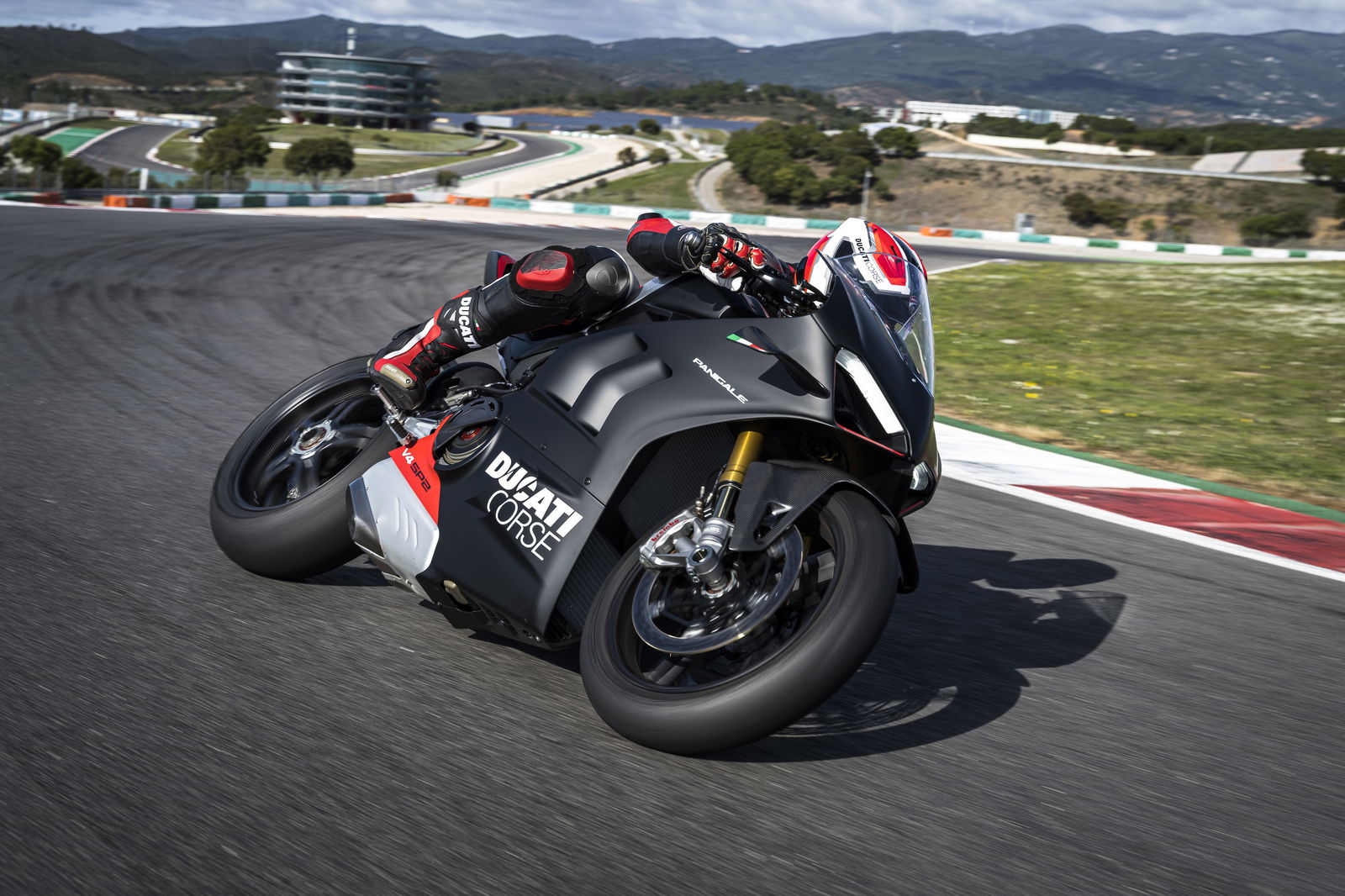
The front part of the frame is an aluminium monocoque, while at the rear is an aluminium swingarm. The combined weight of the monocoque and swingarm is 8.5kg, with the monocoque weighing 3.7kg and the swingarm 4.8kg. Beyond that, the rear subframe is made of carbon fibre.
Onto the brakes, which come from Brembo, we see double steel 338.5mm discs at the front, with a single, 220mm disc at the rear.
The V21L will weigh 225kg, and almost half (110kg) of that is made up by the battery. This is both cause for optimism and pessimism.

On the one hand, it is arguable that the majority of the weight being in one component should allow for the overall weight of the motorcycle to be reduced, because it is all focused in one place.
However, on the other hand it is possible to argue that a more even spread of the weight would offer a greater weight-saving potential going forwards because it is more straightforward to slightly reduce the weight of many components than significantly reduce the weight of one component. But, time will tell.
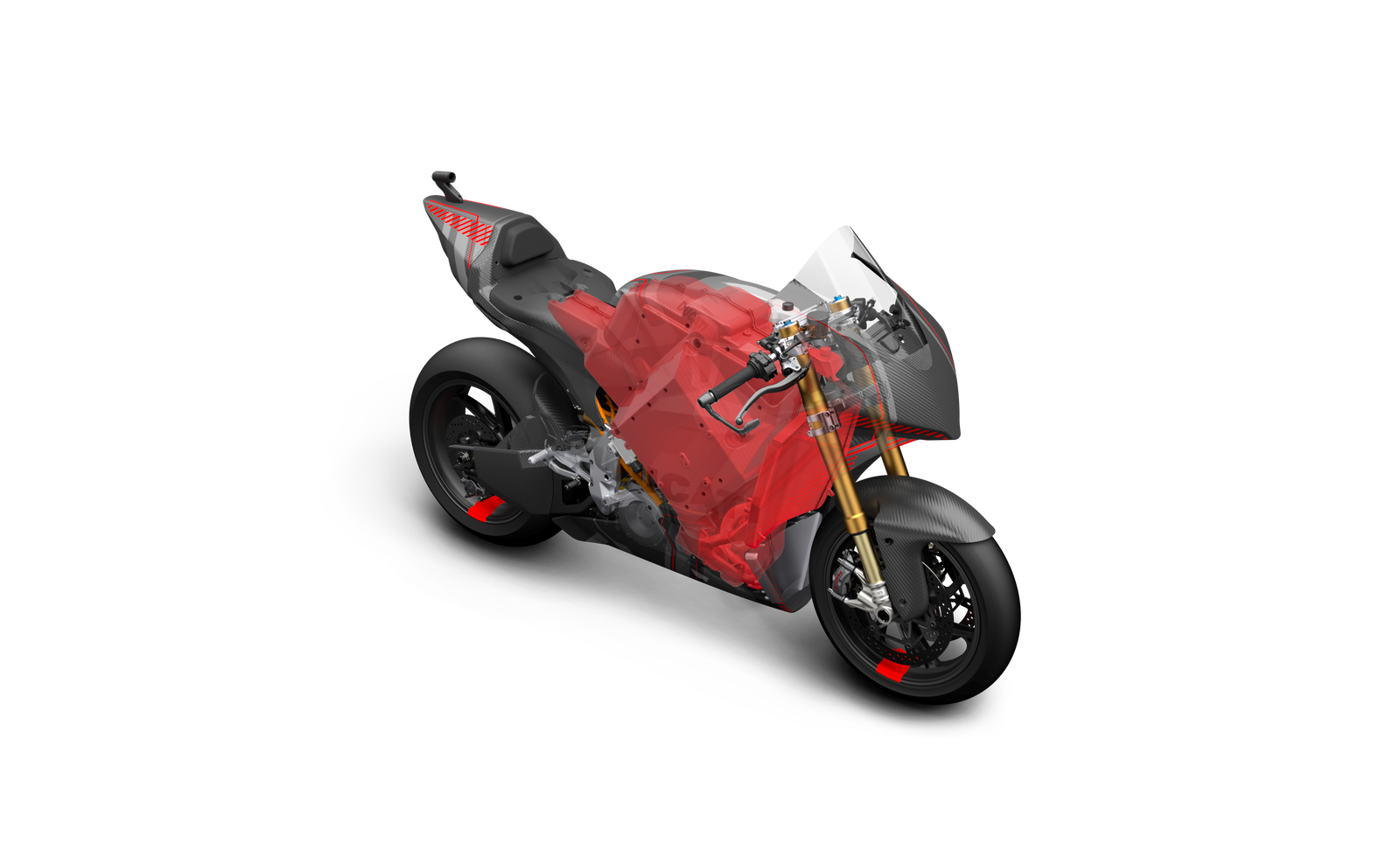
The positive side of the battery is that it has a capacity of 18kWh. For a prototype racer, this is significant, since the recently release Energica Experia adventure bike has a nominal capacity of 19.6kWh. Considering the differing purposes of the two motorcycles, this is impressive from Ducati.
With the weight of the battery, though, it goes without saying that a top speed of 275kph (170mph) would require a significant amount of horsepower.
Indeed, the V21L’s motor will produce 110kW, or 150 horsepower, which is a comparable output to the Triumph 765cc triple that is used in Moto2. In addition to the impressive horsepower is the torque, which is 140Nm.
Furthermore, the motor will weigh 21kg, while the bike’s inverter will weigh just five kilograms.
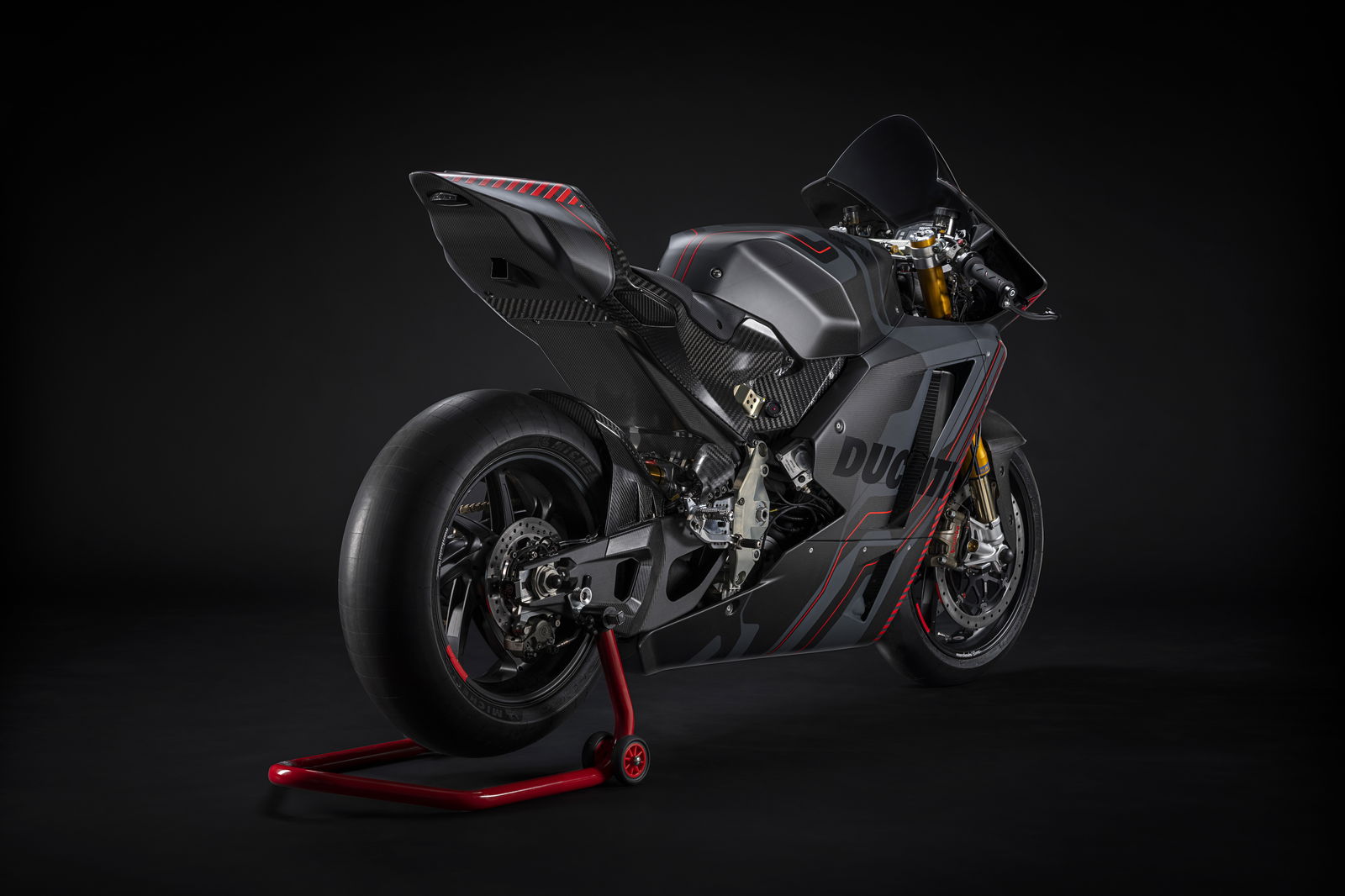
“One of the most advanced technical solutions tested on the Ducati MotoE concerns the cooling system,” a Ducati press release reads. “The prototype components are in fact cooled by a particularly sophisticated and efficient liquid system with a double circuit designed to meet the different thermal needs of the battery pack and the motor/inverter unit.”
The result of this cooling system is that the V21L does not need to cool down before charging. Instead, as soon as it enters the garage it can be plugged in and recharged. Once plugged in, just 45 minutes are required to reach 80% of a full charge.

Until now, Energica has supplied the MotoE World Cup, but their Ego is coming to the end of its time in the World Championship, to be replaced by the prototype V21L.
That is perhaps the biggest difference between the first generation of MotoE, and the second. Ducati’s V21L will bring MotoE in-line with the other Grand Prix classes as it switches from a production-derived motorcycle to a purpose-built racing prototype. An argument about the semantics of ‘prototype’ would be fair, but the point is that you cannot buy a Moto2 bike in a dealership and ride it to the shops, in the same way that this will not be possible with the V21L.
But, that does not mean that Ducati does not wish to have electric road bikes of its own in the future. The involvement of Ducati’s R&D department in the development of the V21L is proof of that, and could indicate that the Bologna brand has its sights set on Energica not just on the track, but also on the roads.

Further evidence towards this point is that the Volkswagen Group - by which Ducati is owned - has also been involved with the project, as well as some of VW’s other subsidiaries such as Lamborghini and Porsche.
Ducati is a part of an Italian trio which are at the peak of exclusive combustion motorcycles. Ducati’s Panigales and Multistradas go along with MV Agusta’s F3s and F4s, and Aprilia’s RSVs and Tuonos as some of the most exclusive production combustion bikes.
On the electric side, it could be said that Energica is the monarch of the exclusives. While other brands focus on practicality and low-powered two-wheelers with their electric programmes, Energica produces bikes like the Ego - the current MotoE bike and Energica’s flagship sports bike - or the aforementioned Experia. These cost more than £20,000, and are designed to be high-performance, ‘luxury’ electrics, rather than practical city commuters like the scooters of Kymco or Yamaha.
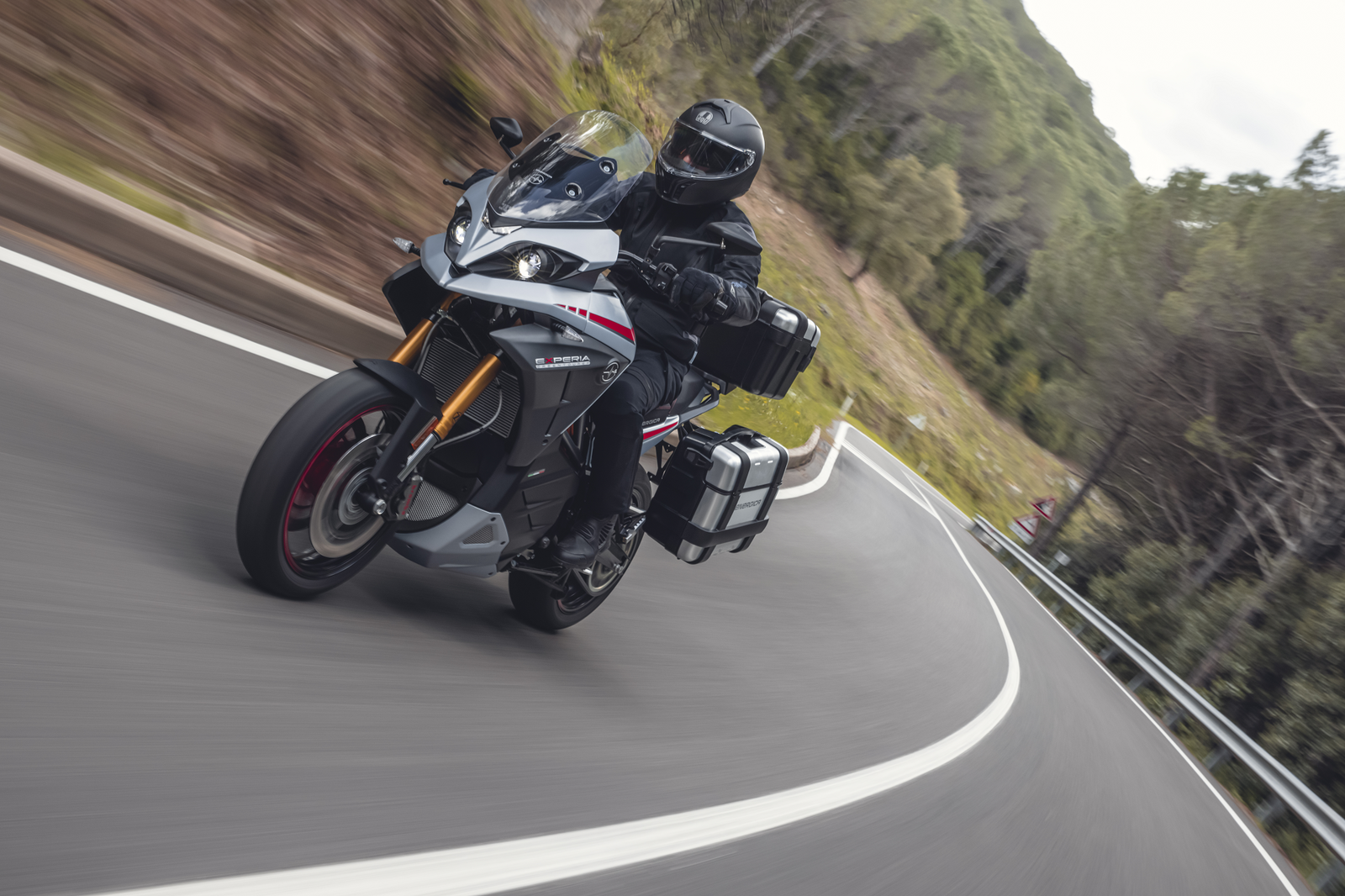
They are not alone in building high-performance, ‘exclusive’ electric motorcycles, of course. LiveWire comes from Harley-Davidson, of course, and Zero’s selection of bikes can hardly be described as one which is devoid of performance. But Energica pushes this to a higher level than LiveWire with their Del Mar S2 or Zero with their SR/S.
Considering Ducati’s first foray into electric motorcycling is a racer that has been developed by Grand Prix winners Alex de Angelis and Michele Pirro, as well as WorldSBK race winner Chaz Davies, it seems clear that their electric aims are directed more at the exclusive, Energica end of the spectrum than the practical side where factories like Yamaha currently stand.
